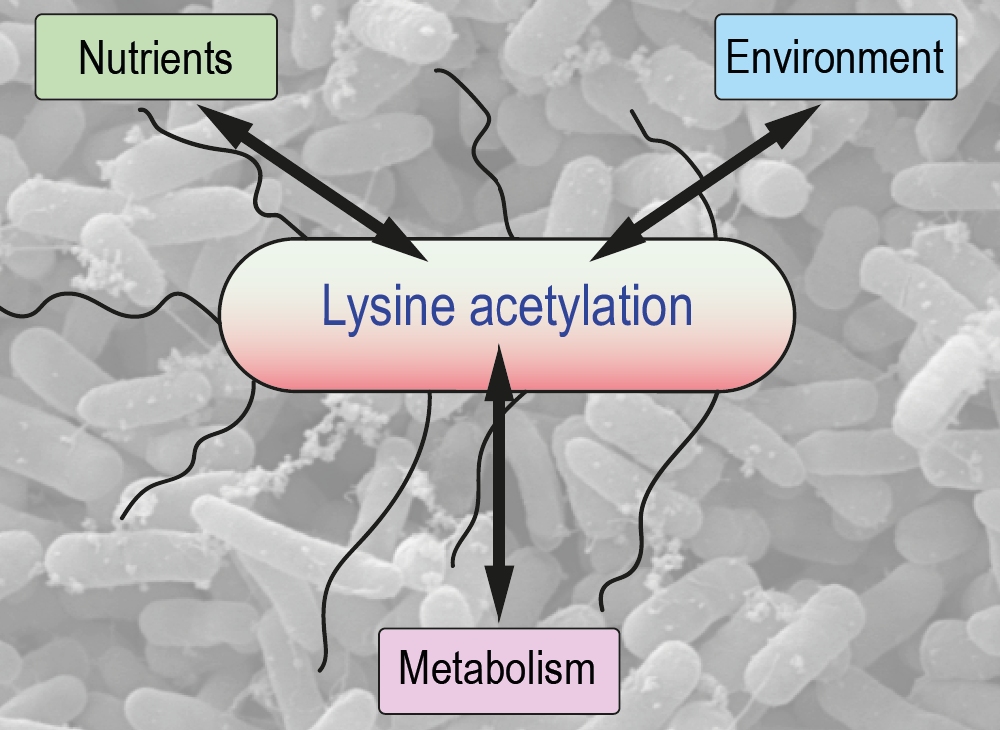Bacterial cells must often cope with constantly changing environmental conditions. This in turn requires a fast adaptation of bacterial cells in order to survive. An important dynamically changing parameter is the availability of nutrients. Depending on nutrient accessibility, bacteria have to produce a different set of proteins. Some metabolic pathways are activated, others inactivated. To achieve this modulation, the activity of genes needs to be adjusted to initiate the production of required proteins. The translation of genetic information resulting in the production of proteins is known as “gene expression”.
How gene expression is regulated in organisms such as plants or mammals has been known for a long time. In bacteria, however, the regulation of gene expression is less well understood. In the now published study, it could be shown by using biochemical, synthetic-biological and structural biological approaches that bacteria apply processes to regulate gene expression that are functionally similar to those described for plants or mammals. A central regulatory mechanism in this process is the acetylation of the amino acid lysine in proteins.
“With this study, we were able to provide evidence for post-translational lysine acetylation playing an important role in adjusting gene expression to cellular metabolism, not only in plants or mammals, but also in bacteria,” explains postdoctoral researcher Dr. Sabrina Schulze, who is one of the shared first authors of the study alongside Dr. Magdalena Kremer.
“This project demonstrates that we are doing cutting-edge research at the University of Greifswald. By combining the expertise of several research groups, we were able to clarify this important regulatory mechanism to an almost atomic resolution. These investigations on mechanistic cellular processes primarily address fundamental research questions. However, these findings may pave the way for the development of novel therapeutic strategies in the mid- to long-term, i.e. to fight bacterial infections,” comments research group leader Prof. Dr. Michael Lammers. To obtain a complete understanding on post-translational lysine acetylation, further research is needed. A central research objective is to elucidate the consequences of a dysfunction in this regulatory system in bacteria. In higher organisms, such as mammals, it is known that a deregulation in lysine acetylation contributes to the development of severe diseases, such as cancer, neurodegenerative diseases, and to the organisms’ ageing process.
The study was carried out by the research group of Prof. Michael Lammers of the Institute of Biochemistry at the University of Greifswald, in close cooperation with the groups of Prof. Mihaela Delcea from the Institute of Biochemistry and Dr. Susanne Sievers from the Institute of Microbiology, both from the University of Greifswald, and research groups from the University of Cologne.
Further information
Paper: Nature Communications (IF 16.6 ) Pub Date: 2024-02-23, DOI:10.1038/s41467-024-46039-8
Research group: http://synthetische&strukturellebiochemie.uni-greifswald.de
Contact person at the University of Greifswald
Prof. Dr. Michael Lammers
Institute of Biochemistry
Felix-Hausdorff-Straße 4, 17489 Greifswald
Tel.: +49 3834 420 4356
michael.lammersuni-greifswaldde
The photo is available on request from pressestelleuni-greifswaldde and can be used for free for editorial purposes connected to this media release. In the event of publication, the name of the photographer must be mentioned.

